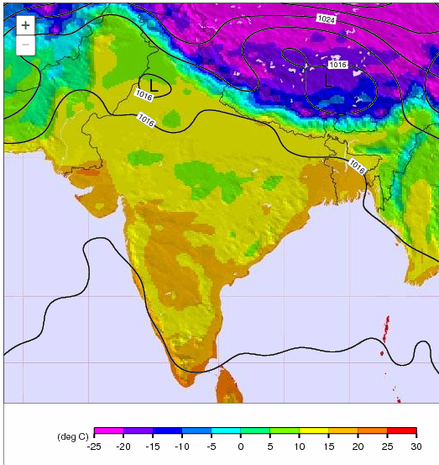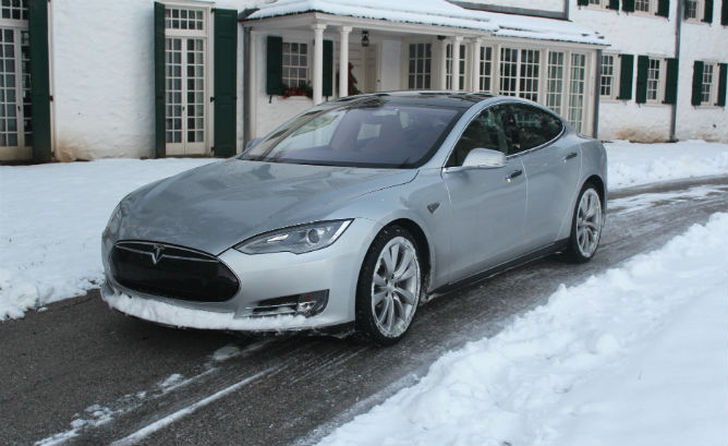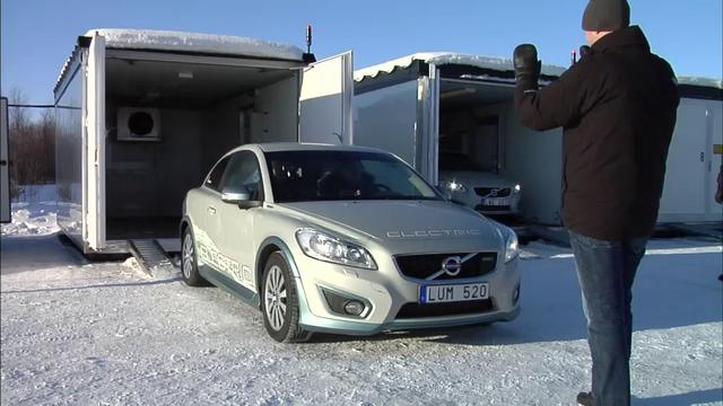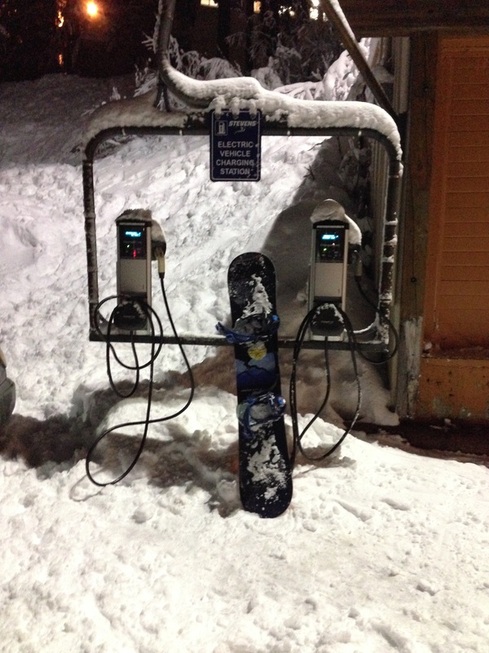Brr! Its freezing!
Many people in our country hardly use this phrase, as it never cold in lots of places in India even in peak winter. India is a tropical country and with the Himalayas protecting us from the cold arctic winds, our winters are short and manageable. Although places above the tropic of Capricorn do experience night time temperatures between 0 to 10°C and temperatures plummet even lower in high altitudes.
Batteries used in Electric Vehicles function best at room temperature, and any deviation towards hot and cold changes the performance and/or longevity. Cold weather presents two main challenges for electric vehicles: cold air limits battery performance, and running the heater drains the battery.
Batteries that would provide 100 percent capacity at 27°C will typically deliver only 50 percent at –18°C (0°F). The capacity decrease is linear with temperature.
Many people in our country hardly use this phrase, as it never cold in lots of places in India even in peak winter. India is a tropical country and with the Himalayas protecting us from the cold arctic winds, our winters are short and manageable. Although places above the tropic of Capricorn do experience night time temperatures between 0 to 10°C and temperatures plummet even lower in high altitudes.
Batteries used in Electric Vehicles function best at room temperature, and any deviation towards hot and cold changes the performance and/or longevity. Cold weather presents two main challenges for electric vehicles: cold air limits battery performance, and running the heater drains the battery.
Batteries that would provide 100 percent capacity at 27°C will typically deliver only 50 percent at –18°C (0°F). The capacity decrease is linear with temperature.
From the map above we see that most major Indian cities hardly experience temperatures below freezing. Although cities like Delhi, Chandigarh, Pune, Nagpur, Bhopal and the cities in the North East do experience temperatures between 0 to 10°C at night. Other major non coastal cities in India like Bangalore, Hyderabad, Ahmadabad have minimum winter temperatures above the 12 degrees mark.
Coastal cities like Mumbai, Chennai, Kolkatta (near Coast) don't have to worry about winter weather as seen from the map.
Coastal cities like Mumbai, Chennai, Kolkatta (near Coast) don't have to worry about winter weather as seen from the map.
The performance of all battery chemistries drops drastically at low temperatures. At –20°C most nickel-, lead- and lithium-based batteries stop functioning. With lead acid - which are used in many e-bikes in India, we have the danger of the electrolyte freezing, which can crack the enclosure. Lead acid freezes more easily with a low charge when the specific gravity of the electrolyte is more like water. But that kind of freezing weather wont be encountered in most major Indian cities, anyway.
A battery is a chemical reaction that gives off electrons, or power. When it’s cold, this chemical reaction slows down in both directions, discharging and charging. You can keep a chemical reaction going by applying heat, which is one way to get more energy out of a battery.
Now to get this heat, automakers sometimes use an electric heater to warm up the battery. If that heater is powered by the battery itself, it uses energy that otherwise would go to propelling the car, and this explains the reduced range.
A battery is a chemical reaction that gives off electrons, or power. When it’s cold, this chemical reaction slows down in both directions, discharging and charging. You can keep a chemical reaction going by applying heat, which is one way to get more energy out of a battery.
Now to get this heat, automakers sometimes use an electric heater to warm up the battery. If that heater is powered by the battery itself, it uses energy that otherwise would go to propelling the car, and this explains the reduced range.
Innovations to tackle the cold
The Tesla Model S, uses an interesting method of warming the battery, once you start driving it, the liquid thermal loop transfers heat from the motor, gearbox and inverter to the battery pack, so not much incremental energy is needed at that point. The Model S also close the radiator louvers at the front of the car (which has the dual benefit of lowering drag) and close the valve leading to the radiators, so the liquid loop doesn't reject energy to the outside environment.
Where as other cars like the Nissan Leaf, Mahindra e2o use an electric heater to keep the battery warm.
But the major killer of the range is the energy which would be directed towards cabin heating.
Nearly every electric car on the global market today uses either an electric immersion heater or an air heater to provide warmth to the cabin. When not plugged in and charging, energy to run those electric heaters has to come from the car’s battery pack. This reduces the range.
The Tesla Model S, uses an interesting method of warming the battery, once you start driving it, the liquid thermal loop transfers heat from the motor, gearbox and inverter to the battery pack, so not much incremental energy is needed at that point. The Model S also close the radiator louvers at the front of the car (which has the dual benefit of lowering drag) and close the valve leading to the radiators, so the liquid loop doesn't reject energy to the outside environment.
Where as other cars like the Nissan Leaf, Mahindra e2o use an electric heater to keep the battery warm.
But the major killer of the range is the energy which would be directed towards cabin heating.
Nearly every electric car on the global market today uses either an electric immersion heater or an air heater to provide warmth to the cabin. When not plugged in and charging, energy to run those electric heaters has to come from the car’s battery pack. This reduces the range.
However, there has been interesting innovations by Volvo, the Swedish giant. The Volvo C30 Electric car seems to have the best heating system of any electric car. It uses liquid heating to warm the cabin.
The C30 uses E85 bio-ethanol heater to keep the C30 electric warm. The system is capable of providing 12 kilowatts of heat to keep the car and its drivetrain warm, and means the C30 electric can drive in temperatures as low as -30 °C
Moreover, the system is capable of heating up the car from -25°C to a warm, comfortable driving temperature of 25°C degrees or higher in under 5 minutes.
The following video illustrates the use of liquid heating in the Volvo C30.
The C30 uses E85 bio-ethanol heater to keep the C30 electric warm. The system is capable of providing 12 kilowatts of heat to keep the car and its drivetrain warm, and means the C30 electric can drive in temperatures as low as -30 °C
Moreover, the system is capable of heating up the car from -25°C to a warm, comfortable driving temperature of 25°C degrees or higher in under 5 minutes.
The following video illustrates the use of liquid heating in the Volvo C30.
Video illustrating the Volvo C30 heating system
Winter weather updates in India
Mahindra e2o, the only electric car sold in India have provided a winter software patch to the controller. You can read about it in my e2o blog.
The software monitors the outside temperature and if it notices that the temparature is below 10°C, the controller automatically starts warming the battery. This is a cool and proactive patch released by Mahindra REVA which will ensure better life of the battery pack.
Mahindra e2o, the only electric car sold in India have provided a winter software patch to the controller. You can read about it in my e2o blog.
The software monitors the outside temperature and if it notices that the temparature is below 10°C, the controller automatically starts warming the battery. This is a cool and proactive patch released by Mahindra REVA which will ensure better life of the battery pack.
Winter weather tips
These are generic tips from pluginindia.com, which could enhance the life of your EV's battery.
These are generic tips from pluginindia.com, which could enhance the life of your EV's battery.
- If you have a covered garage, park your EV there since it’s warmer than outside
- Use the preheat functions while the vehicle is still plugged in to the charger. The Mahindra e2o offers that as a feature of their smartphone apps.
- While driving an electric car, turn off the heater unless really required. This can have a big impact on the range, as electric heaters from the battery are used to warm the cabin.
- We advise putting your electric car into its economy mode which uses less power. This often restricts the amount of power you can send to the wheels to promote smoother, more energy efficient driving.
- Aggressive driving and stepping on the accelerator pedal, stresses the battery, especially in cold conditions. Its better to gradually accelerate to get enhanced range.
- If you have a lead acid based e-bike, If you don’t use your e-bike in winter for any reason, you need to remember to charge your lead acid battery for one hour every 3-4 days. Just a small top up will preserve its life quite well.
- Your e-bike's distance will be inversely proportional to the amount of weight you are carrying. Remove any junk you have in the rear compartment, or underneath the seat. This is more important in cold weather as more energy would be extracted from the sealed lead acid batteries, if there is less weight to lug around.
- This tip of aggressive acceleration is a applicable to an e-bikes as well. Hard starts or fast starts are the number one drain of current on your lead batteries. The more current you use, the less distance you will be able to cover.
Final Words
Winter is not a huge issue in most major Indian as cities, but its always better to take care of your EV to enhance the life of your battery and to go further!
As the wise people say - prevention is better than cure!
Winter is not a huge issue in most major Indian as cities, but its always better to take care of your EV to enhance the life of your battery and to go further!
As the wise people say - prevention is better than cure!
Update - 01/06/2014
My friend Cameron Bellamy, who lives near Seattle, USA, sent me this photo of an EV charging station in the Stevens Pass Ski Area. He even placed his snow board for context :)
Now this is called - going out of the way to support the EV community!
My friend Cameron Bellamy, who lives near Seattle, USA, sent me this photo of an EV charging station in the Stevens Pass Ski Area. He even placed his snow board for context :)
Now this is called - going out of the way to support the EV community!




